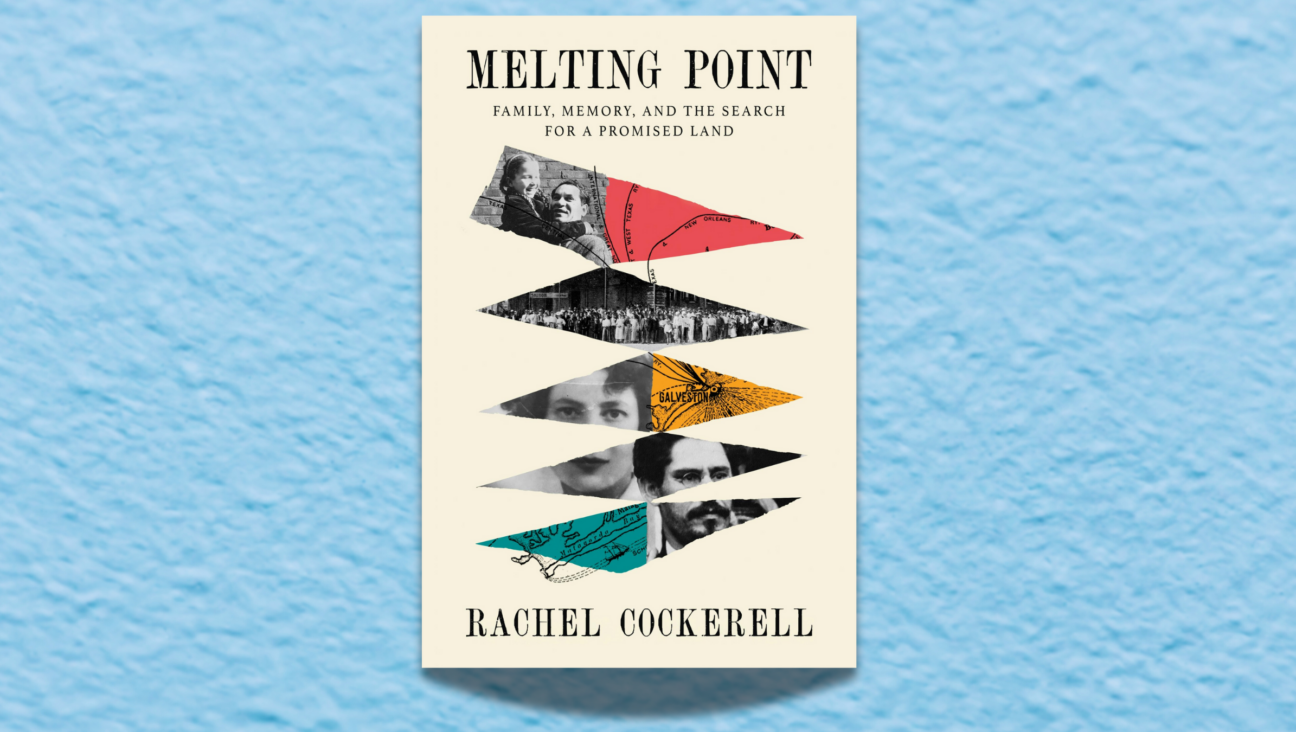Comfort, Comfort
This week’s portion, Va-Et’hanan, includes two of the most famous sections of the Bible, a second version of the Ten Commandments in Deuteronomy 5:6-18, and the Shema in Deuteronomy 6:4-9. One could write endlessly about these crucial texts and their importance for the history of Judaism. However, I’ll focus instead on the Haftarah, Isaiah 40:1-26, whose opening words, “Nahamu nahamu ammi” (“Comfort, comfort, my people”), provide the name for this Sabbath, “Shabbat Nahamu.”
Earlier this week, Jews observed the holiday of Tisha B’Av, the Ninth day of the month of Av, on which both the First and Second Temples were destroyed, the former by the Babylonians in 586 BCE and the latter by the Romans in 70 C.E. For the three weeks immediately preceding Tisha B’Av, two of the Haftarot come from the book of Jeremiah, the prophet who lived during the tumultuous events that culminated in the destruction of the First Temple. The third one comes from the book of Isaiah, the prophet who lived more than a century before the destruction but who saw clearly that even in his day the people of Judah were in need of moral reform. These three readings of rebuke are appropriate lessons to be chanted on the three Shabbatot preceding Tisha B’Av.
Equally appropriate is the choice made by the rabbis for the Haftarah for the Sabbath immediately following Tisha B’Av. The reading is Isaiah 40:1-26, and its highlight is a message of consolation. Jerusalem is to be comforted for the punishment it has endured; she has suffered “double for all her sins” (40:2). These words are a perfect message for the Sabbath after Tisha B’Av. Indeed, this week’s Haftarah is but the first of seven prophetic readings on this same theme. For this Sabbath and the next six Shabbatot, the Haftarot have no link to the Torah reading, as is normally the case, but instead all focus on the single theme of consolation — leading directly from Tisha B’Av all the way through to Rosh Hashanah — and all derive from the latter portion of the book of Isaiah, from chapter 40 to the end.
Isaiah 40 begins a new section of the book of Isaiah that is so different from the first 39 chapters in its character and historical setting that scholars have concluded that its author is not the famous prophet Isaiah of the 700s BCE, mentioned above, but rather a second anonymous prophet who lived during the 500s BCE after the destruction of Jerusalem. For lack of a better name, scholars call this author Second Isaiah or Deutero-Isaiah, and he is responsible for the last 27 chapters of the book, namely, Isaiah 40-66. Whereas the First Isaiah lived in Jerusalem, the Second Isaiah is assumed to have lived in Babylon during the Exile.
This conclusion is accepted unanimously by modern biblical scholars, but it originates in the pre-modern era in traditional Jewish sources. The first individuals to give voice to this view were the remarkable Moses ibn Gikatilla in the 11th century and Abraham ibn Ezra in the 12th century. These two scholars were guided by a rational approach to the text, an approach that led them to state the obvious: The latter part of the book of Isaiah clearly could not have been written by a prophet in the 700s BCE. It must have come from a later period.
What evidence is there in the book of Isaiah that led ibn Gikatilla and ibn Ezra almost 1,000 years ago and all scholars of more recent vintage to conclude that two distinct men authored the two distinct parts?
First, as the opening words of Isaiah 40 from this week’s Haftarah imply, Jerusalem already has been punished. In other words, it must have been destroyed, an event that did not occur until 586 BCE. Second, Isaiah 44:26 refers to Jerusalem as an uninhabited city, a situation which fits only into the period of 586-538 BCE, that is, the Babylonian Exile. Third, Isaiah 44:28 and 45:1 mention explicitly Cyrus, king of Persia, who ruled 550-530 BCE. The former passage also refers to Cyrus’s famous decree that enabled the Jews to return to Judah and to rebuild the Temple in Jerusalem in 538 BCE. Finally, whereas the first 39 chapters of the book refer repeatedly to Assyria (the major power of the Near East in the 700s BCE) and hardly ever to Babylon, in the last 27 chapters of the book, Assyria is never mentioned and Babylon comes to the fore. This situation matches perfectly the historical setting of the 500s BCE: Assyria ceased to exist by this time and Babylon was now the great power — until it was defeated by Persia in 538 BCE.
All this evidence points to the conclusion that indeed there are two prophets whose works were combined into one book. How, why and when this combination occurred we do not know. Scholars have noticed, however, that much of Second Isaiah’s language imitates the language of First Isaiah (compare, for example, 65:25 with 11:6-7), so quite possibly a second prophet consciously added his words to the existing scroll of the earlier prophet.
The approach outlined here, dividing the book into two separate compositions, is consistent with the prime function of the prophet as “spokesperson for God,” that is, one who communicates the divine message to the people. Note that the root meaning of both the Hebrew word navi and the Greek word prophetes relates to speech (the former derives from the Semitic root nun-bet-aleph meaning “speak, call,” while the latter means literally “to speak before”). The notion that a prophet is a prognosticator of the future, the meaning the word often conveys in popular English usage, is a secondary development. The rational approach of ibn Gikatilla, ibn Ezra, and modern scholars understands that an individual such as First Isaiah, living in the 700s BCE, would not have known the name of a foreign king, namely Cyrus, who would rule almost two centuries later.
Understanding the proper historical background of this week’s Haftarah — filled with beautiful poetry penned by the anonymous prophet of the Exile, known today as Second Isaiah — affords us greater appreciation of the divine message. Just as Second Isaiah spoke to the generation that followed the destruction of Jerusalem, so should we hear his words as we observe the Sabbath that follows Tisha B’Av. To point to just the most famous of the interrelationships between the two relevant readings of this week: Note that Lamentations, written in the wake of 586 BCE and read on Tisha B’Av, states near the outset, “eyn lah menahem,” “there is no one to comfort her [Jerusalem]” (Lamentations 1:2); whereas Second Isaiah, written circa 538 BCE and read on this Shabbat, begins (as noted above) with the words “Nahamu nahamu ammi,” “Comfort, comfort, my people” (Isaiah 40:1).
Gary A. Rendsburg holds the Blanche and Irving Laurie chair in Jewish history and serves as the chair of the department of Jewish studies at Rutgers University.
The Forward is free to read, but it isn’t free to produce

I hope you appreciated this article. Before you go, I’d like to ask you to please support the Forward.
Now more than ever, American Jews need independent news they can trust, with reporting driven by truth, not ideology. We serve you, not any ideological agenda.
At a time when other newsrooms are closing or cutting back, the Forward has removed its paywall and invested additional resources to report on the ground from Israel and around the U.S. on the impact of the war, rising antisemitism and polarized discourse.
This is a great time to support independent Jewish journalism you rely on. Make a Passover gift today!
— Rachel Fishman Feddersen, Publisher and CEO
Most Popular
- 1

News Student protesters being deported are not ‘martyrs and heroes,’ says former antisemitism envoy
- 2

News Who is Alan Garber, the Jewish Harvard president who stood up to Trump over antisemitism?
- 3

Fast Forward Suspected arsonist intended to beat Gov. Josh Shapiro with a sledgehammer, investigators say
- 4

Politics Meet America’s potential first Jewish second family: Josh Shapiro, Lori, and their 4 kids
In Case You Missed It
-

Fast Forward Who killed Jesus? It wasn’t the Jews, writes a scholar of Roman law.
-

Fast Forward Is ‘New Absolute Bagel’ real? A sign stirs fretful optimism on the Upper West Side.
-

Opinion Yes, the attack on Gov. Shapiro was antisemitic. Here’s what the left should learn from it
-

News ‘Whose seat is now empty’: Remembering Hersh Goldberg-Polin at his family’s Passover retreat
-
Shop the Forward Store
100% of profits support our journalism
Republish This Story
Please read before republishing
We’re happy to make this story available to republish for free, unless it originated with JTA, Haaretz or another publication (as indicated on the article) and as long as you follow our guidelines.
You must comply with the following:
- Credit the Forward
- Retain our pixel
- Preserve our canonical link in Google search
- Add a noindex tag in Google search
See our full guidelines for more information, and this guide for detail about canonical URLs.
To republish, copy the HTML by clicking on the yellow button to the right; it includes our tracking pixel, all paragraph styles and hyperlinks, the author byline and credit to the Forward. It does not include images; to avoid copyright violations, you must add them manually, following our guidelines. Please email us at [email protected], subject line “republish,” with any questions or to let us know what stories you’re picking up.













